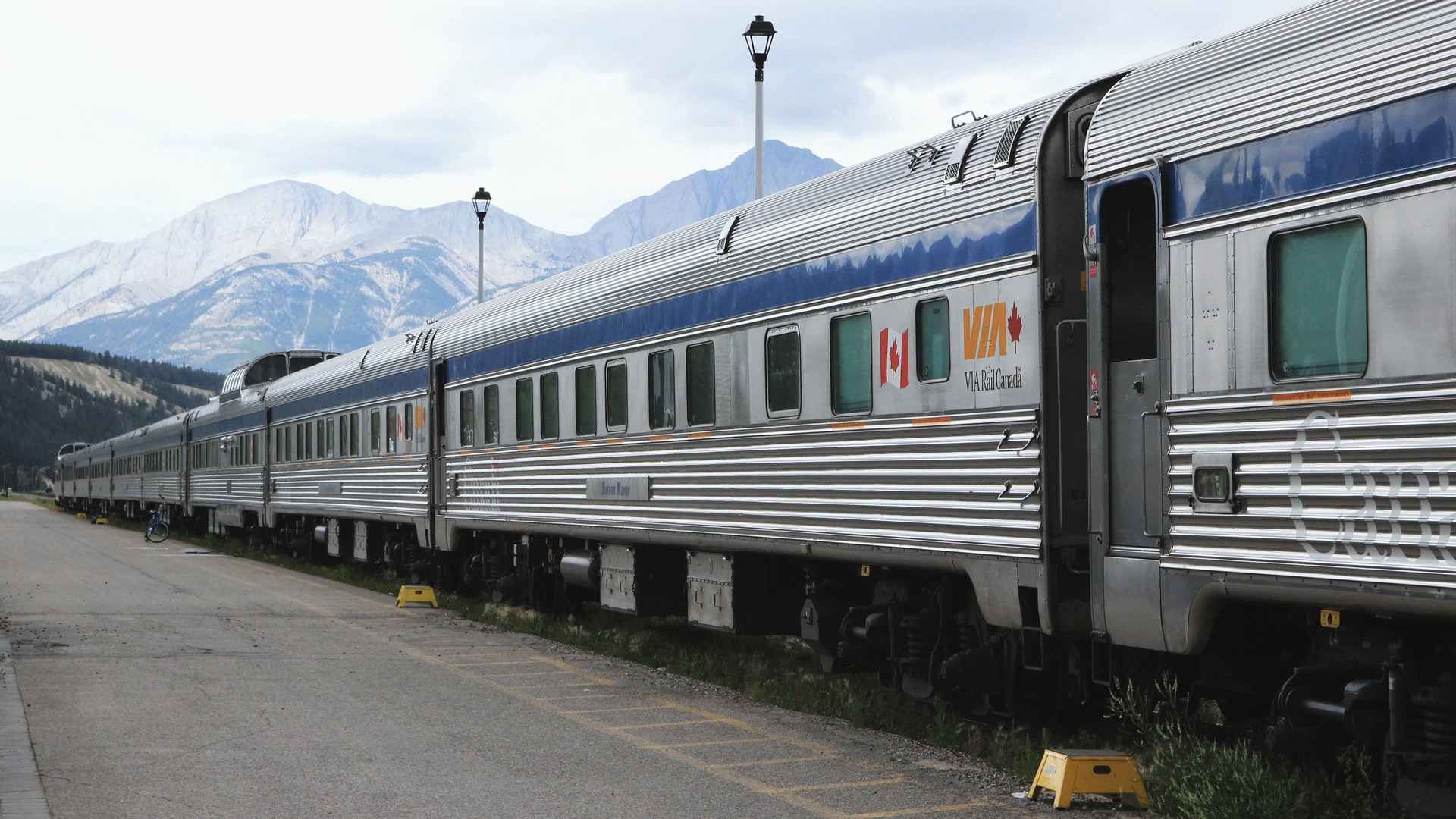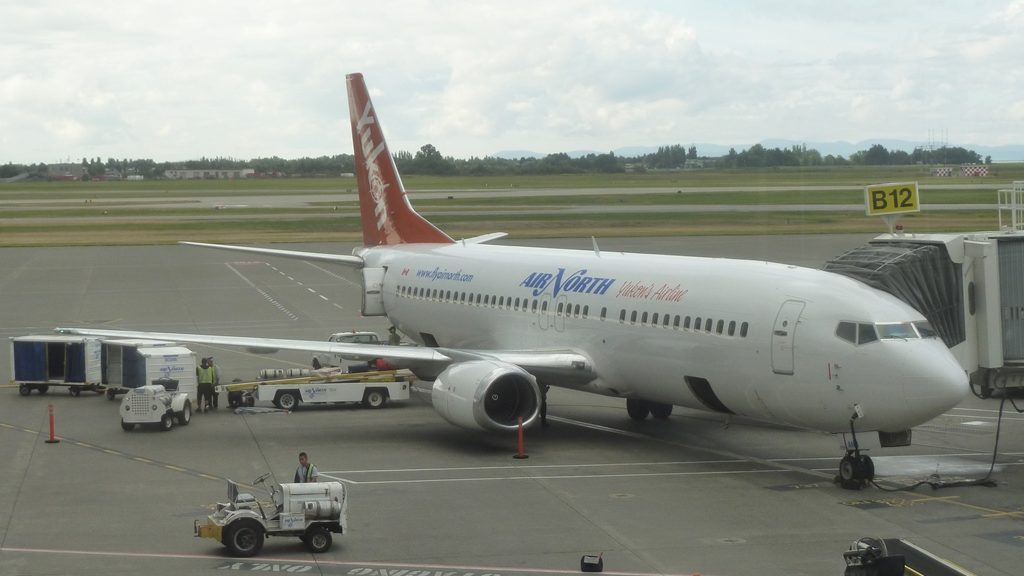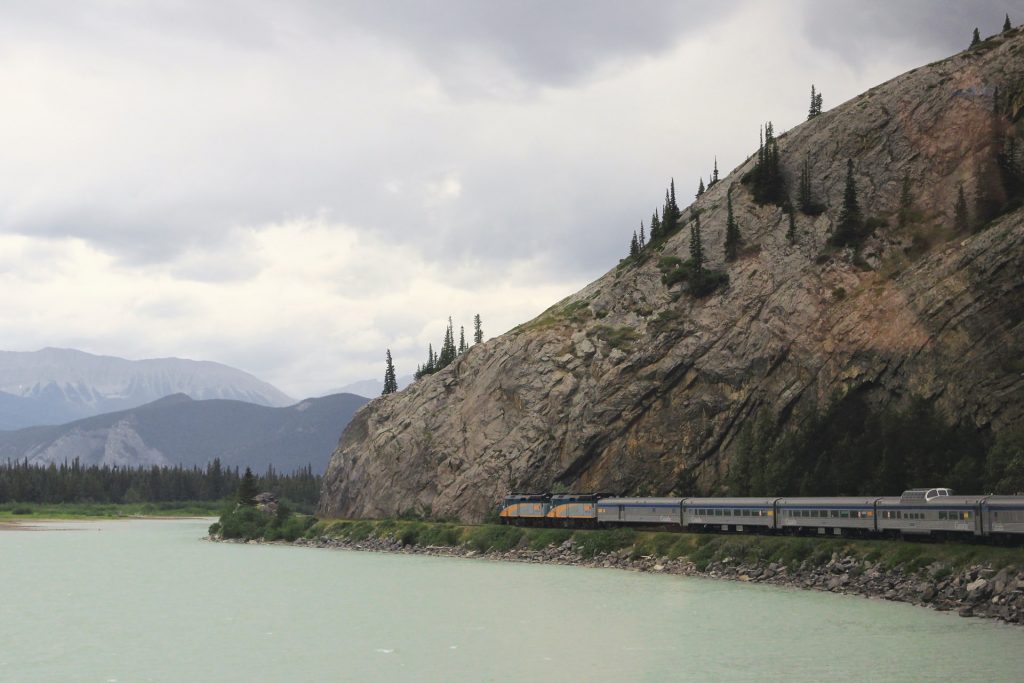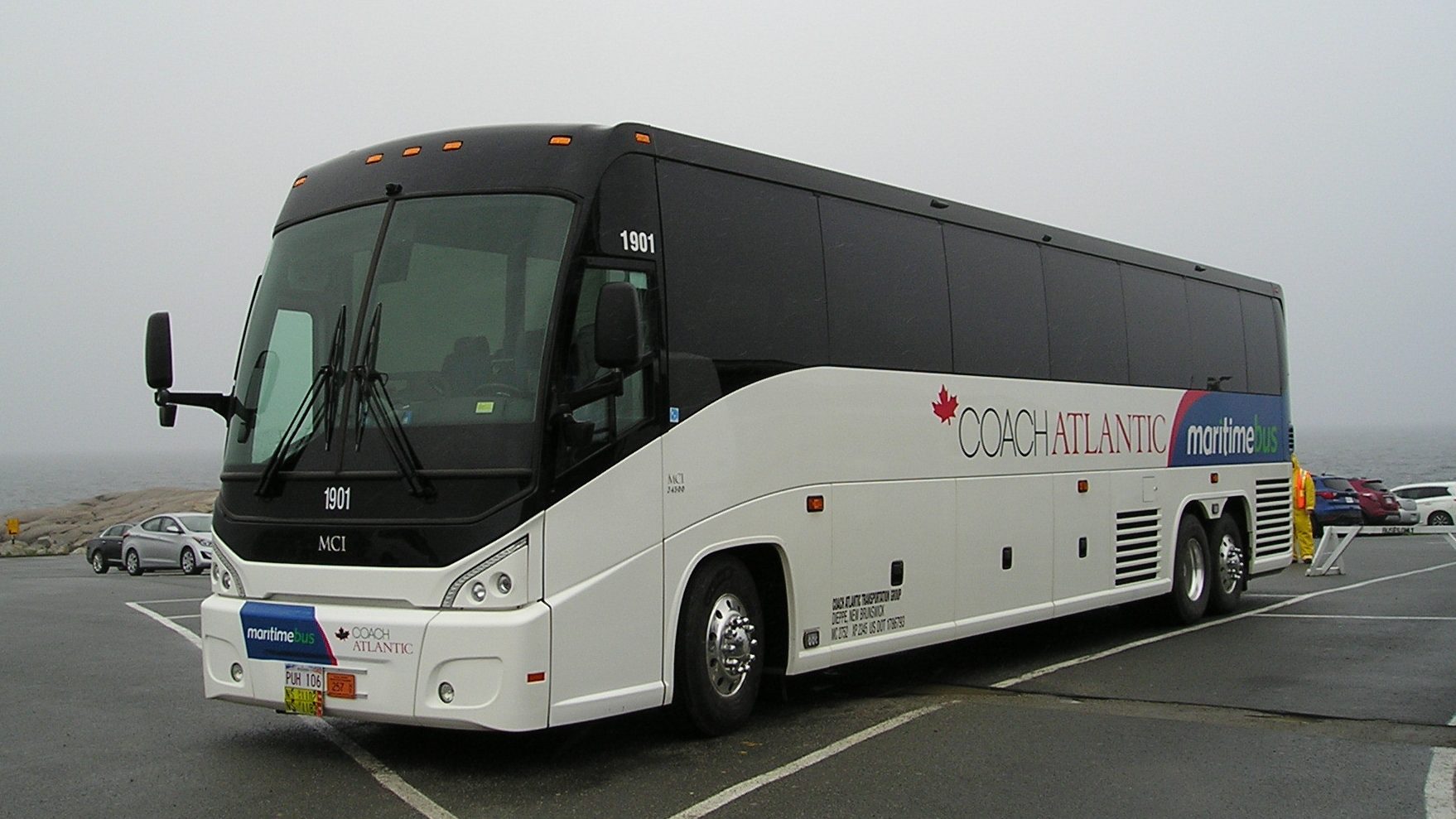
Federal Minister of Environment and Climate Change, Steven Guilbeault, made a commitment during the 2021 United Nations Climate Change Conference (COP26) in Glasgow to travel across Canada by rail, conducting climate policy consultations. On July 13, 2022 it was reported that the promised trip had been called off due to the lack of passenger rail service to most of Canada’s provincial capitals.[1]
Transport Action reached out to the Minister’s office to offer assistance with planning an itinerary. Our offer wasn’t accepted, so this article explains how we would make the journey. Despite how sparse and fragile intercity public transport is in Canada, Transport Action Canada recommends completing the trip using a combination of rail and motorcoach, plus northern air services to include the territories.
The loss of these consultations is a disappointment to many who expected this important trip to take place and provide Ottawa with useful input on climate policy, but not a surprise to those who have followed the past three decades of cuts and underinvestment in Canada’s interprovincial public transportation networks. Only five of the thirteen provincial and territorial capitals can still be reached by passenger rail on the network that was pivotal to Canada’s confederation.
A “Grand Tour of Canada” is still possible by combining rail and motorcoach to reach all the provincial capitals, although vastly more difficult to organise and slower than it would have been a generation ago, before the decimation of VIA Rail services in western Canada and the Maritimes by federal government cutbacks in 1981 and 1990. Following the loss of Greyhound, with fragments of its former networking being replaced by local motorcoach operators, planning also requires knowledge of the routes currently in operation, and any plans made remain fragile because many connections and transfers between operators can not be guaranteed.
Although the much-extended schedule of Canada’s iconic transcontinental train the Canadian allows for a lot of padding, sloppy dispatching by CN can add many hours of variability at points along the route. To minimize the risk of freight-related delays to VIA Rail’s services causing missed connections or meetings, we suggest the Canadian be used in the eastbound direction. To start the journey, originating in Ottawa, we therefore recommend heading north first.
For northern and remote communities flying is likely to remain the main connection to the outside world for the foreseeable future, and so a fair climate change mitigation plan should make allowances for this. With just a little more modal shift and climate conscious behaviour from the rest of us, our government ought to be able to avoid penalizing our fellow Canadians in the north, whose communities, traditions, and lives are most severely impacted by climate change.
Travelling to Canada’s northern territories by ground transportation is virtually impossible. Until the demise of Greyhound Canada there was a service to Yellowknife, operated by Frontier Coachlines and connecting at Hay River with services south to Edmonton. At the present time, there does not appear to be any scheduled service north of High Level, AB which is served by Northern Express.[2] There was also a bus service connecting Whitehorse with the White Pass and Yukon Railway to Skagway, AK before the pandemic, and this bus link is expected to return, but not until summer 2023. There’s a ferry service ferry service from Skagway to Bellingham, WA from which point it is possible to make your way back to British Columbia.
To start the trip, we would fly on Canadian North from Ottawa to Iqaluit, with onward flights from Iqaluit to Yellowknife being available on Mondays, Tuesdays, and Thursdays, with a stopover in Rankin Inlet.[3] Flights from Yellowknife to Whitehorse are available on Air North, as are flights from Whitehorse to Victoria, BC. This segment of trip, including meetings in each capital, would take five or six days.

To make this segment of the trip work, the traveller should leave Victoria on a Monday morning, with the aim of spending Wednesday in Edmonton, Friday in Regina and catching the only bus of the week to Winnipeg on Friday night.
The VIA Rail service on Vancouver Island from Victoria to Courtenay was discontinued in 2011 due to lack of maintenance on the railway line. Service has yet to be reinstated, despite the presentation of a strong business case by the Island Corridor Foundation. Thus, travel from Victoria to Vancouver will be by bus. The best option is the BC Ferries Connector bus service, which uses the Swartz Bay to Tsawwassen ferry route. Taking the 09.45 departure from Victoria allows passengers to arrive at Vancouver’s bus terminal, conveniently collocated at Pacific Central Station, at 13.45.
From Vancouver, the passenger can begin using the rail network, boarding the Canadian to travel to Edmonton. However, the once-daily train currently only runs twice per week, departing at 15.00 on Mondays and Fridays and scheduled to arrive in Edmonton at 18.50 the following day.[4]

While rail services to Regina were cut in 1990, there is a bus service between the two cities, provided by Rider Express, on Monday, Wednesday, Thursday, Friday, and Sunday. Departure from Edmonton is at 12.15, from the Kingsway / Royal Alexandra Hospital Transit Centre, which can be reached using the Edmonton LRT network. The bus travels through Saskatoon and arrives in Regina at 22.20. To make the other connections work, the trip should be made on Thursday afternoon.
This is the most fragile connection in the whole grand tour, with the only service departing Regina at 23.30 on Friday nights and arriving in Winnipeg at 07.45 the following morning. Everything else must be planned by working backwards and forwards from this constraint. (In the opposite direction, the bus travels overnight on Saturdays.) Such a sparse service between two provincial capitals is a horrendous deficit in mobility for Canadians.
There are two trains a week between Winnipeg and Toronto, leaving on Sunday evening or Wednesday evening at 23.30 if the train is on schedule, although possibly some time after midnight if it has been delayed further west. With arrival in Winnipeg only being possible early on Saturday, the traveller might take the Sunday evening train, arriving in Toronto at approximately 14.29 on the Tuesday. Again, this timing is unfortunately rather flexible, so it is possible the train might arrive earlier, or several hours later. If the train has become late enough to conflict with evening GO trains on the Richmond Hill line, it may not arrive in Toronto until dinner time.
Arriving in Toronto on Tuesday evening and spending the day in the city on Wednesday, the next train to head to the Maritimes isn’t until Friday evening, so first we head to Quebec City. This will take up most of the day on Thursday of week three of the trip.
There are several VIA Rail departures each day, with a travel time of up to eleven and a half hours. This travel time would be reduced to eight hours or less if the federal government proceeds with the High Frequency Rail project before the next federal election in 2025. Unfortunately, the government has extended the procurement process and risks going to the polls in 2025 with nothing to show for its promises before the 2021 election. This would be a both political blunder and a serious hindrance to achieving a meaningful reduction in passenger transport related emissions.
Getting to and from the Maritimes, VIA Rail’s Ocean is returning to thrice weekly service in August after slow ramp up of service following the pandemic hiatus. Thrice weekly remains generally inconvenient for Maritimers and visitors compared with the six trains a week offered up to 2012, while not representing a major savings in operating costs.
Furthermore, the train is incurring a delay of two hours this summer due to ongoing track repair work on the Mont Joli subdivision, so there’s a significant risk of missed connections with Maritime Bus in Moncton (to Fredericton or Charlottetown) or Amherst (to Charlottetown) in the eastbound direction. This is a major inconvenience to the average passenger, but an itinerary that aims to reach all the provincial capitals can be made reliable by going to Halifax first.
Within the region, Maritimes Bus provides a network of services between most of the major cities, although the connection to other bus services in Quebec at Rivière du Loop is currently unavailable, making it impractical to travel from Fredericton directly to central Canada, which would save a day, so we changed the order in which the provinces are visited to ensure a reliable connection to the westbound Ocean.

Train service is available Sunday, Wednesday (from August 10) or Friday, departing Saint Foy at 22:49, with arrival in Halifax scheduled at 17.52 the following day.[5] In practice, arrival may be too late to schedule any evening activities. Some productive time could be recovered by inviting some participants to take the bus to Truro or Amherst to meet the train and holding a meeting on board.
Maritime Bus and DRL motorcoaches are timed to meet the overnight Marine Atlantic crossings between north Sydney and Port au Basques.
Bus service is available daily, departing Halifax at 15.00, arriving in North Sydney at 20.30 to connect with the 23.45 ferry sailing. The following morning, DRL leaves at 0800, and arrives in St. Johns at 21.40.[6]
The Maritime Bus schedule does not connect with the ferry between North Sydney and Argentia in the eastbound direction, but it may be possible to use this on the return trip, departing Argentia at 17.00 on Mondays, Thursdays or Saturdays and arriving in North Sydney at around 8am the following morning after a 16-hour crossing.
Alternatively, the DRL motorcoach leaves St. Johns at 07.30, arriving in Port au Basques at 21.05 for a connecting with the 23:15 sailing to North Sydney, arriving the following morning in time for the bus which departs at 09.20. Arrival in Fredericton is at 18.35, after transfers in Truro and Moncton.
There has been no passenger train service on Prince Edward Island since October 25, 1969 and freight operations on the island ended in 1989. However, the provincial government has now taken a significant step toward transportation equity by expanding transit service between communities and offering $2 fares.[7]
Maritime bus leaves Fredericton at 11.15 daily except Saturdays, with transfers at Moncton and Amherst, arriving in Charlottetown to 17.05.
Maritime Bus departs from Charlottetown at 12.00, arriving in Amherst at 14.50 for a connection with VIA Rail’s Ocean at 16.08. The bus stop at Amherst is on the highway, some distance from the train station and downtown, so it is also possible to use a bus connection to Moncton and join the train there. The Ocean is scheduled to arrive in Montreal at 10.03 the following morning, allowing a connection to train #35 to Ottawa at 11.54. The train to Ottawa may be held for connecting passengers when the Ocean is delayed, or passengers may be rebooked on a later connection to Ottawa.
To complete the trip, allowing a day for meeting in each capital, would take just over four weeks. Few Canadians, even amongst Parliamentarians and Senators, have visited all thirteen provinces and territories. The insights gained by approaching such a trip with a listening and learning attitude would be of considerable value, and adjustments to the itinerary would be possible to reach additional communities if time allowed.
We hope Minister Guilbeault will consider making good on his promise to cross Canada using our country’s public transportation network, and then relay his first-hand experience of the parlous state of the network that Canadians should be able to rely upon to his cabinet colleagues.
[1] https://nationalpost.com/news/politics/guilbeaults-cross-country-climate-train-tour-derailed-by-lack-of-service
[2] https://northernexpress.ca/routes/
[3] https://canadiannorth.com/plan_your_trip/
[4] https://www.viarail.ca/en/plan-your-trip/train-schedules/vancouver-jasper-winnipeg-toronto
[5] https://www.viarail.ca/en/plan-your-trip/train-schedules/montreal-halifax
[6] https://drl-lr.com/schedule-and-fares/
[7] https://www.cbc.ca/news/canada/prince-edward-island/pei-toonie-transit-western-pei-expansion-1.6397670